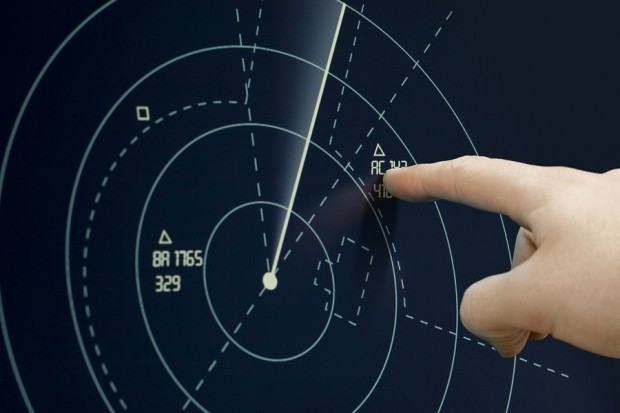Indonesian search crews recovered debris and bodies floating in the sea from the AirAsia Bhd. airliner that went missing three days ago with 162 people on board, as investigators seek to determine what brought down the plane.
Among the discovered objects is what appears to be an emergency door as well as submerged items resembling plane parts, F.H. Bambang Sulistyo, head of the national search and rescue agency, said in Jakarta. Two female bodies and one male body were retrieved, he said. No mention was made of survivors.
The crash site is in an area around Pangkalan Bun, about 1,000 kilometers (620 miles) southeast of Singapore, the destination of Flight 8501, which started in Surabaya, Indonesia on Dec. 28. Water in the area is shallow, at 25 meters to 30 meters deep, and authorities have prepared divers for the search of the data recorders and further evidence.
“It wasn’t a controlled ditching,” said Paul Hayes, safety director at London-based aviation consulting company Ascend Worldwide Ltd. “That’s clear from the finding of bodies that don’t have life jackets on.”
Black Box
Finding debris and the voice and data recorders that hold information about the aircraft is key to determine why the Airbus Group NV A320 aircraft went down after departing from the central Indonesian city of Surabaya.
It’s the third high-profile incident involving a carrier in Asia this year, raising safety concerns in one of the fastest- growing aviation market in the world. AirAsia is the biggest customer by units of the A320, a workhorse airliner that’s used by hundreds of carriers around the world.
“We have 1,000 flights a day and until we have the investigation we cannot make any assumptions as to what went wrong,”AirAsia founder and Chief Executive Officer Tony Fernandes said at a press conference. “All I can say is the weather in Southeast Asia is very bad at the moment.”
The Java Sea covers about 320,000 square kilometers, bordered by the Indonesian islands of Borneo to the north, Java to the south. Waters in the region are known to be shallow, which analysts and oceanographers have said will help in the search. So far, no pings have been detected from the plane’s black box, Indonesia’s Air Force said.
No Signal
“There’s no doubt they’ll recover the data boxes,” said Peter Marosszeky, a former air accident investigator who lectures at the University of New South Wales. “They know when it went down and about where.” The region can be “particularly at this time of year, very violent in terms of weather.”
The plane disappeared off radars after the pilot requested a higher altitude because of stormy clouds in the flight path. The last signal from the plane was between the city of Pontianak on Borneo and Tanjung Pandan.
With the plane’s wreckage located, authorities will focus their efforts on finding the recorders, which store cockpit communication and sounds from the front of the plane as well as key data points that can help recreate the last moments of a doomed flight. The boxes, which are bright orange to facilitate their retrieval, are waterproof and fortified and emit an electronic signal to help search crews find the devices.
Clouds, Storm
Authorities had widened the search area across the Java Sea as Chinese and U.S. military ships headed to the region. Indonesia, which leads operations as Singapore, Malaysia, Australia and South Korea contribute ships and planes, broadened the combing area to 13 sectors from the seven they had been scouring, Sulistyo said earlier.
Losing the AirAsia plane caps what could be the worst year for air-passenger fatalities since 2010. The AirAsia pilots didn’t send a distress signal, drawing comparisons with Malaysian Airline System Bhd.’s Flight 370 that disappeared on March 8 en route to Beijing from Kuala Lumpur. No wreckage from that flight has been found in what’s become the longest search for a passenger jet in modern aviation history.
While AirAsia is based in Sepang, Malaysia, it operates with subsidiaries and affiliates in different countries. The missing plane belonged to its Indonesian operations.
AirAsia QZ8501 was at 32,000 feet when the pilots requested to fly higher to avoid clouds, acting Air Transport Director Djoko Murjatmodjo said in Jakarta. Air traffic controllers didn’t respond to the request before the plane disappeared off radar, National Transportation Safety Committee head Tatang Kurniadi said yesterday. There were storms along AirAsia’s flight path, Accuweather.com said on its website.
–With assistance from Andrew Janes and Fathiya Dahrul in Jakarta, Herdaru Purnomo in Surabaya and Anurag Kotoky in New Delhi.





















 Five AI Trends Reshaping Insurance in 2026
Five AI Trends Reshaping Insurance in 2026  California Workers Comp Combined Ratio for 2024 Highest in 20-Plus Years
California Workers Comp Combined Ratio for 2024 Highest in 20-Plus Years  Why ‘Good Enough’ Is Killing Insurance: The Hidden Cost of Satisficing
Why ‘Good Enough’ Is Killing Insurance: The Hidden Cost of Satisficing  Insurance Costs, Climate Concerns Factor Heavily in U.S. Home Buying Decisions
Insurance Costs, Climate Concerns Factor Heavily in U.S. Home Buying Decisions 










